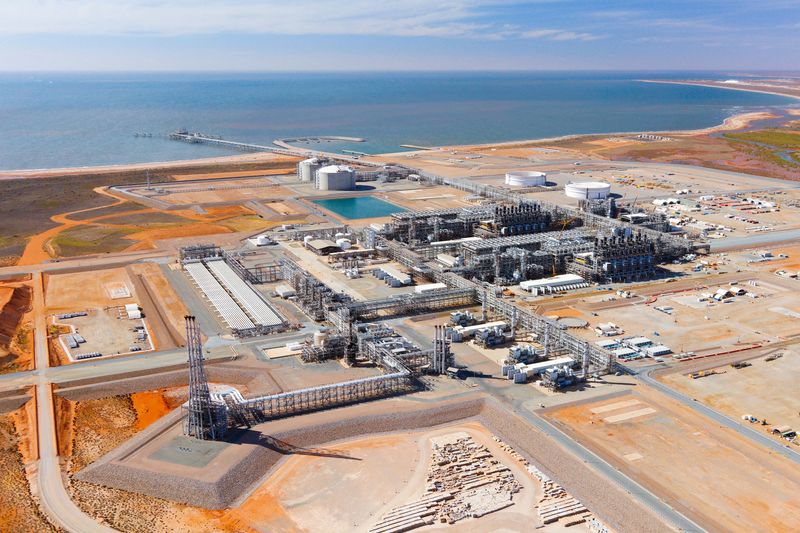SINGAPORE (Reuters) - The Australian government implemented a series of regulations and measures in the gas industry to meet domestic energy needs, manage soaring gas prices and reduce emissions.
Gas producers have protested the measures, warning that repeated intervention could have long-term repercussions on investments and jeopardize Australia's position as a key exporter of liquefied natural gas (LNG).
Australia provides LNG supplies to major North Asian buyers such as Japan, China, Korea and Taiwan.
Here is a chronology outlining the actions, announcements, and decisions made by the Australian government since 2022:
Date Actions, announcements and decisions made by the Australian government
June 15, 2022 The Australian Energy Market Operator (AEMO) suspended the electricity spot
market across eastern Australia after soaring global energy prices, coal
supply disruptions and outages at coal-fired power plants led to a power
crisis in the country.
June 24, 2022 AEMO formally ended its suspension of the wholesale electricity spot market.
July 5, 2022 The government proposed to extend its gas security policy until 2030 to
protect domestic supply and prevent a supply crunch.
July 19, 2022 AEMO issued a notice identifying a gas supply shortage in the populous states
of Victoria, New South Wales, South Australia and Tasmania from July to
September, which came after a previous supply shortage in June.
July 19, 2022 AEMO began discussions with three East Coast LNG plants - Shell (LON:RDSa) Plc,
ConocoPhillips (NYSE:COP) and Santos - to bridge the supply gap.
Aug. 1, 2022 The Australian Competition and Consumer Commission (ACCC), Australia's
competition watchdog, urged the federal government to consider curbing gas
exports, warning that its east coast could face a major shortfall in the
following year.
Aug. 1, 2022 The government announced Australia will consider extending its domestic gas
security supply mechanism until 2030 to curb LNG exports, in a move to prevent
shortfalls and soaring prices.
Sep. 29, 2022 The government announced it will not place curbs on gas exports following
successful negotiations with three east coast producers, as it secured a
solution to meet the projected domestic supply shortfall. In the agreement,
producers will first offer uncontracted gas to the domestic market before
offering it offshore. Domestic buyers will also not pay more for that gas than
international customers.
Nov. 4, 2022 The government deliberated the implementation of price caps on gas in a policy
debate.
Dec. 14, 2022 Parliament passed legislation to cap gas prices until end-2023, and then
requires a "reasonable price" for domestic sales after the cap expires.
Feb. 10, 2023 Australia's government proposed to expand its ability to curb LNG exports from
three east coast projects - Queensland Curtis LNG, Australia Pacific LNG and
GLNG - to meet gas supply shortfalls under a plan due to take effect in April.
March 30, 2023 Parliament passed an upgraded emissions reduction plan that will cap
Australia's total greenhouse gas emissions and curb some new gas and coal
investments in the country, which came into effect on July 1.
April 26, 2023 The government announced the decision to extend the cap on gas prices until
July 2025.
May 6, 2023 Australia announced plans to change its Petroleum Resource Rent Tax (PRRT) to
increase the tax paid by the offshore LNG industry beginning July 1.
July 10, 2023 Australia finalised regulations for its domestic gas market, including the cap
on gas wholesale prices but with exemptions for small, domestically focused

producers. The energy minister will also have the power to exempt other
producers for a variety of reasons, including new investment or supply deals.